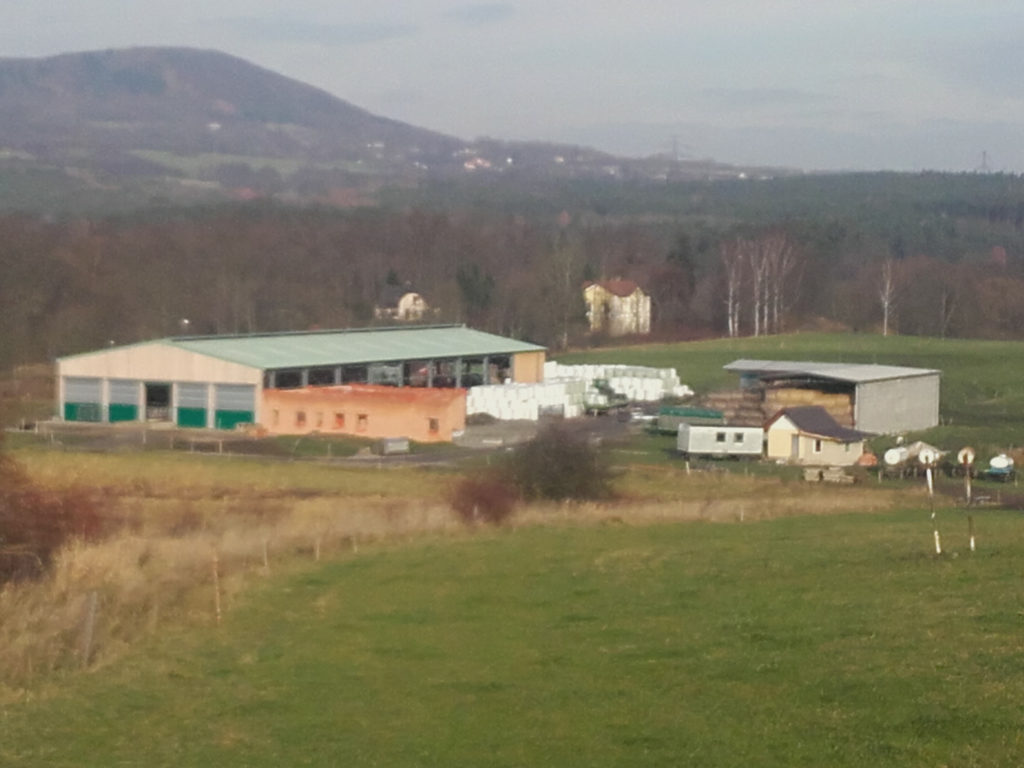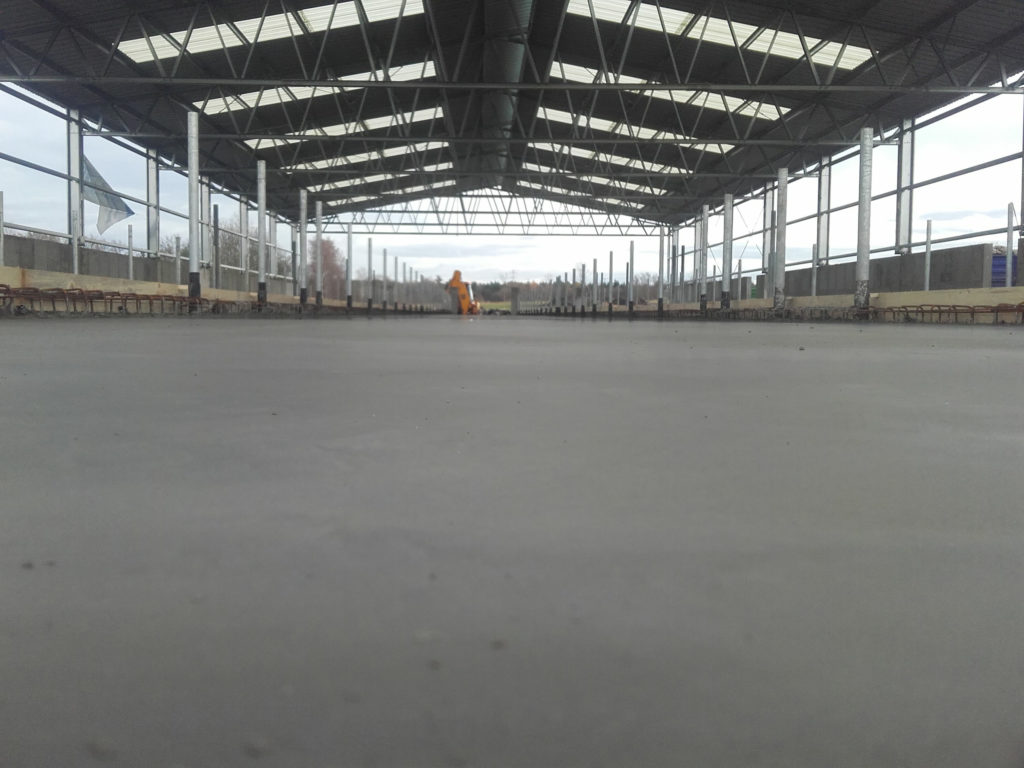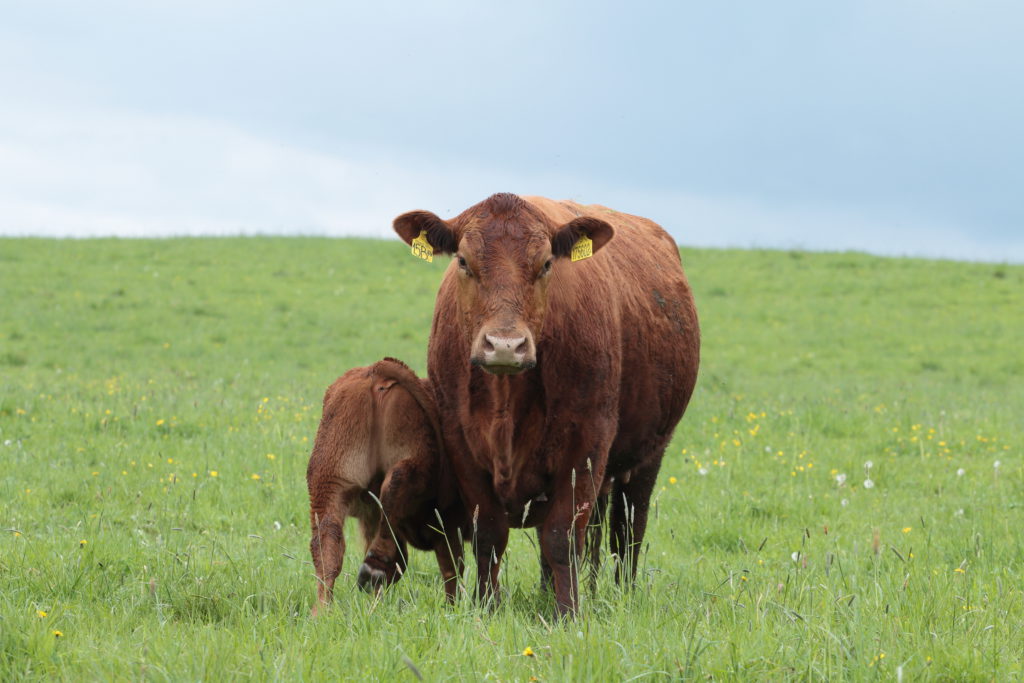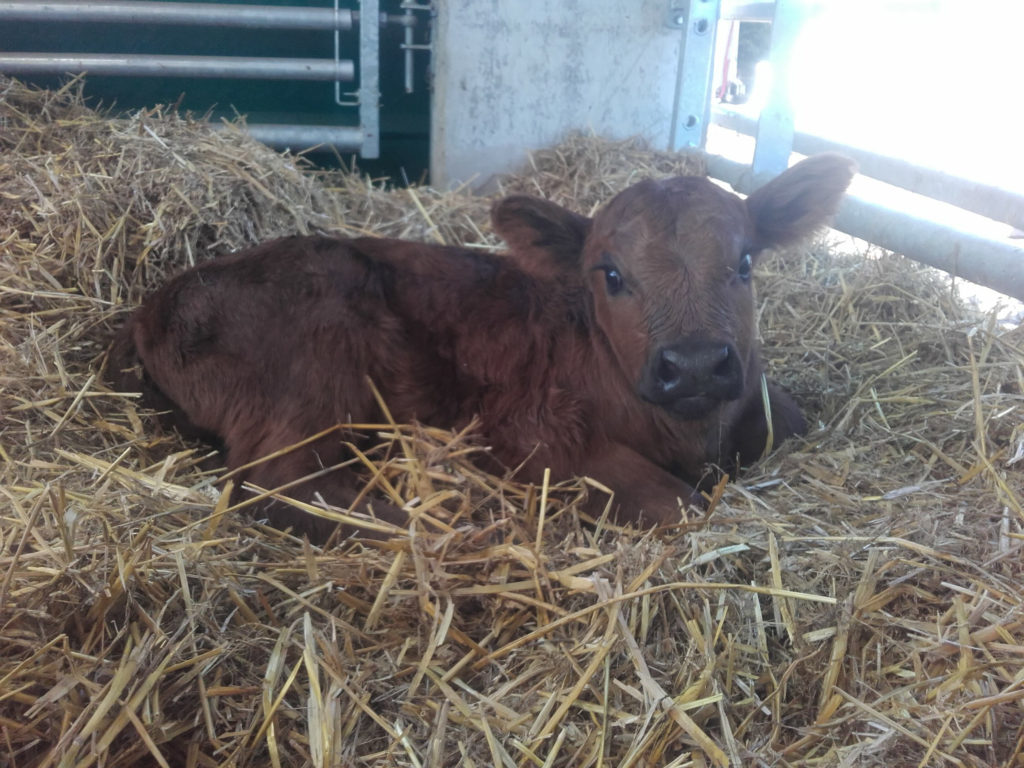
The farm was established in 2001 by renting the first sixty hectares of long-term uncultivated state land. In the same year, the first 16 heifers were purchased from Brloh Farm Cooperative. A year later, another 12 heifers were purchased from the same farm, and the breeding station of the Aberdeen Angus in the Stvolinky village was established. Since then, only 7 breeding bulls have been purchased for the herd, with an emphasis on breeding characteristics of maternal values and RED coloring, which have been active in natural breeding. All breeding cows come from within the herd. We have been operating under the strict conditions of Certified Organic Farming since 2004.
Since 2006, 7 adult breeding bulls have left the farm, 33 bull calves were successfully grown at breeder’s station, 2 of which have been at maturity selected for a semen collection center ZAI 237 and ZAI 385. The second bull mentioned has returned after a year-long service back to the farm and is being used for natural breeding. The highest rated farm’s bull was in 2016 ZAI 363, whom the commission rated with 88 points for exterior.
Since 2006, 7 adult breeding bulls have left the farm, 33 bull calves were successfully grown at breeder’s station, 2 of which have been at maturity selected for a semen collection center ZAI 237 and ZAI 385. The second bull mentioned has returned after a year-long service back to the farm and is being used for natural breeding. The highest rated farm’s bull was in 2016 ZAI 363, whom the commission rated with 88 points for exterior.
Over time, the herd has been expanded to approximately 80 mothers, of which approximately half have RED color. There are three breeding bulls in the herd presently ZAI 385 , ZAI 617 and ZAI 706.
Approximately half of the cows and heifers are artificially inseminated every year by bulls from all over the world. From 2015, selected animals can be seen on national livestock exhibitions.
At present, we manage about 200ha of permanent grassland and 30ha of arable land. Most of the cultivated land is located in the Protected Landscape Area of Kokořínsko – Mácha Region in the area of Holany pounds and Hills Vlhošť (highest in the Kokořínsko Protected Landscape Area) and Ronov (with the ruins of a 14th century guard castle). Most of the permanent grasslands are used for animal grazing, while the arable land is focused on the production of high-quality bulk feed for the winter and to a lesser extent, for the production of bio-grain for farm’s own use. The operation of the farm is supported by the family and by use of modern farm equipment.
In 2016 a newly built wintering facility with a capacity of ca 80 cows with calves, including hay storage and water wells, were put into operation. In the future, it is planned to expand the premises by outdoor paved and roofed enclosures and to expand storage capacity.

… is the most popular beef breed of cattle, naturally polled, black or red in color (Black or Red Angus). The breed high value is in easy calving, excellent maternal qualities, excellent fertility, viability of born calves, longevity and good grazing capability along with high resistance to adverse climatic conditions. Adult cows reach about 650-700kg, adult bulls weigh an average of 1,000-1100kg. Meat is characterized by natural marbling, delicateness and juice, which is why it is highly prized culinary delight and sought after all over the world.
The breed originated in the early 18th century in Scotland, where the first Breeding Book was instituted in 1842. Animals of a small body frame with a high proportion of tallow served primarily to produce meat and tallow to produce axle grease. North America also played an important role in breeding history, where the first edition of the Studbook was published in 1886. The result of this breeding is Angus as we know it today – an increase in the body frame and a reduction in the production of tallow. Currently, it is grown as a medium-breed type with a high proportion of the most valuable meat parts, while retaining all the existing qualities of the breed. Today, Aberdeen Angus is the most common breed in the world – from the USA, Canada to Chile and Brazil, New Zealand, Australia, South Africa and Zimbabwe. In Europe, from Portugal to the Czech Republic and from the Nordic countries to Romania, presently the breed is being developed in the former Soviet Union countries and in the Russian Federation.
The breeding of the Angus in our country began on November 22, 1991 by importing pregnant heifers from Canada, followed later by importing animals from Germany and Denmark. In March 1993, the Association of (Czech) Angus breeders was founded. Thanks to a sophisticated system of breeding values, based on data obtained from performance monitoring, working with them, and strict adherence to selection criteria, the breed is still being developed.






